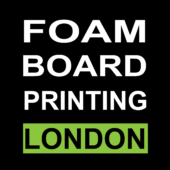Paddleboarding is a fantastic way to enjoy water sports, and making your own foam paddle board can be both a rewarding and cost-effective project. Foam paddle boards are popular due to their buoyancy, durability, and ease of customization. This guide will walk you through the process of making a foam paddle board from scratch.
Materials Needed:
- EPS Foam Core: Expanded Polystyrene (EPS) foam is lightweight and easy to work with. You can purchase it in large sheets or blocks.
- Fiberglass Cloth: For reinforcing the foam and adding durability.
- Epoxy Resin: To bond the fiberglass to the foam and to create a smooth surface.
- Paddle Board Template: A template or a pre-made outline to guide your shaping process.
- Sandpaper: For smoothing the foam and resin.
- Hot Wire Cutter or Foam Knife: For cutting and shaping the foam.
- Mixing Containers and Brushes: For mixing and applying the epoxy resin.
- Protective Gear: Gloves, mask, and goggles to protect yourself from dust and chemicals.
Step-by-Step Process:
1. Design and Template:
Start by designing your paddle board. You can create your own design or use an existing template. The most common sizes for paddle boards are 10 to 12 feet in length, 30 to 34 inches in width, and about 4 to 6 inches in thickness. Draw your design on a piece of paper, making sure it matches the dimensions you want.
2. Cutting the Foam Core:
Using a hot wire cutter or foam knife, cut the EPS foam into the shape of your paddle board according to the template. Carefully shape the foam to create the board’s outline and profile. Be patient during this process, as precise cutting ensures a better final product.
3. Shaping the Board:
Once the foam core is cut, refine its shape using sandpaper. Focus on creating a smooth, streamlined surface. Pay attention to the edges and the nose of the board, as these areas affect performance and handling. Sanding the foam will also help the epoxy resin adhere better later on.
4. Applying Fiberglass:
Cut the fiberglass cloth into pieces large enough to cover the entire board. Lay the cloth over the foam core, ensuring it fits snugly without wrinkles. Mix the epoxy resin according to the manufacturer’s instructions and apply it over the fiberglass cloth using a brush. The resin will saturate the cloth and bond it to the foam.
5. Curing the Resin:
Allow the epoxy resin to cure as per the manufacturer’s instructions. This usually takes several hours. Make sure the board is in a well-ventilated area and away from dust during this time. The curing process hardens the resin and makes the fiberglass strong and durable.
6. Sanding and Finishing:
Once the resin is fully cured, sand the board’s surface to smooth out any imperfections and achieve a polished finish. Be thorough, as this step ensures the board’s aesthetics and performance. You may need to apply a few additional coats of resin to achieve a smooth surface.
7. Adding Accessories:
Finally, install any accessories such as fins, a deck pad, and a paddle board handle. These components can be purchased separately or custom-made. Ensure that all accessories are securely attached and positioned correctly for optimal performance.
Conclusion:
Building your own foam paddle board can be a gratifying experience, offering you a personalized and high-quality watercraft. While the process requires patience and attention to detail, the end result—a custom-designed paddle board—provides a unique and enjoyable way to experience paddleboarding. By following these steps, you not only save money but also gain valuable skills and knowledge about the craft of paddle board making. With a bit of effort and creativity, you can create a paddle board that fits your needs and stands out on the water.
